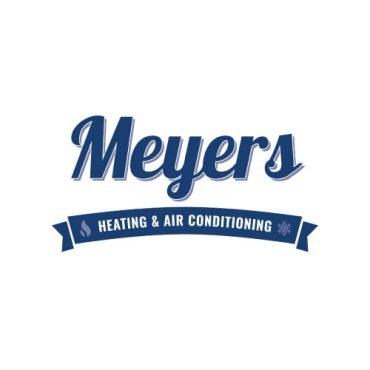The management of water in the American West has historically lacked any consideration for the rivers themselves. This means that water was only considered of value when it was taken out of the river and put to use elsewhere – ending up in a faucet or irrigating crops.
This idea was enshrined in the state’s constitution in the 1870s with the first in time, first in right doctrine that still underpins water law today.
-
 play_arrow
play_arrow
Connecting The Drops: The Value of Local Rivers and Waterways kgnu
That means that those with the oldest or most senior water rights – often municipalities, who rely on water out of the river, get first dibs. With climate change, drought and over allocation of the water, this has led to a crisis situation for most of the state’s rivers.
But communities around Colorado are engaging people, often on different sides of water conflicts, with a view to keeping more water in the rivers and improving the ecological health of the water systems. For Connecting the Drops, Maeve Conran reports.

It’s a hot July day at Charlie’s Hole, a popular tubing and fishing spot on the Yampa in downtown Steamboat Springs.
The rapids here are man-made – they’re part of a river feature that the city of Steamboat Springs built and it has a recreational in-channel diversion water right. That’s a water right specifically aimed at keeping water in the river for the river’s sake. That’s something Kent Vertrees appreciates. The former river guide teaches river skills at the Colorado Mountain College and now heads up Friends of the Yampa.
“You know my connection to this river is, it’s like coming home for me.”
Vertrees was involved in Steamboat Springs’ stream management planning process which began in 2015. Kelly Romero–Heaney, Water Resources Manager with the City of Steamboat Springs, says it was prompted by some very dry years.
“You look back at 2002 when we had a critical drought year and the river got down to 17 CSF and we really saw an impact to aquatic life as a result. Fast forward 10 years to 2012, another drought year, it looked like the flows were going to drop down to that level again.”
But then the Colorado Water Trust stepped in and they worked out a an agreement to have water released out of Stage Coach Reservoir to help bolster flows.

“Once they did that, we realized then ok. maybe this is something we could figure out on a more sustainable level, more long term. But we realized it’s something that needs to be locally driven so it is sustainable.”
Locally driven projects are exactly what the Colorado Water Conservation Board had in mind when they outlined their vision for stream management plans in the state’s first Water Plan. Nicole Seltzer, another Steamboat Springs resident, and science and policy manager for River Network, says the state wants local communities to be in the driver seat in terms of river health planning.
“Specific to protecting and enhancing stream flows, the plan calls for 80% of locally prioritized rivers to be covered by stream management plans by the year 2030.”
River Network is a nonprofit that is working with communities around the state who are looking to undertake a stream management plan – something which could help rivers in times of drought and in times of over allocation of water.
“At the end of the day, there’s no new water in Colorado, in most average too-dry hydrologic years, all the water that’s in the river is spoken for, for some use, it’s either being used or on its way to being used. So a stream management plan is really about collaboratively managing existing supplies to better meet multiple needs.”

Here on the Yampa, unlike other rivers in the state, there is usually enough water for everyone’s needs. It’s considered a free flowing river, one of the last remaining ones in Colorado, and it doesn’t have any major trans basin diversions. So no water is pulled out to be sent to the thirsty Front Range. But counter-intuitively, that has actually led to its own set of challenges says Kent Vertrees.
“So being a wild river is great, we get those really high peaks that flood the banks and connect to the wet lands and recharge and supply habitats for endangered fish and endangered eco systems, but the flip side to that is because of that lack of storage we don’t have those releases in the mid to late summers and then the river gets low, it gets warmer, it gets less oxygen in it so we get an impaired system in some ways.”

And it’s that issue that really drove the town of Steamboat Springs to come up with a stream management plan.
Kelly Romero-Heaney with the city says when the river is really low, the water heats up faster and that really impacts the fish – a serious prospect for this town where fly fishing attracts millions of dollars in tourism every year. The stream management plan for this 9 mile stretch of the Yampa that runs through downtown identified two ways to tackle those rising water temperatures – adding more water, and planting more trees.
“So when you lose your riparian vegetation, your river forest and the canopy cover with the cotton woods then that provides the opportunity for the sun to just beat down on the water and heat it up, so if we really want to prepare our rivers for climate change, at least in our area, we need to help to restore that cottonwood forest that was once there to help protect it.”
Restoring the cottonwoods and the riparian habitat is a major part of the Steamboat Springs stream management plan, but it comes at a cost –an estimated $75,000 a year over the next 3 years.
The Colorado Water Conservation Board is giving grants to communities to come up with stream management plans and for some projects, but Nicole Seltzer with River Network says funding could become an issue.
“We have to have funding to implement the planning processes and then to implement the projects that are recommended out of them.

And the state of Colorado has been great in allocating some funding in order to make these happen, but that funding fluctuates from year to year, it’s not always reliable due to state budget issues and so we need a better more stable source of funding in order to accomplish this.”
Seltzer at River Network has worked with 7 different communities on stream management planning and is optimistic about its potential impact on water systems.
Back on the Yampa, Kent Vertrees is also optimistic about the fate of this river and sees the restoration of riparian habitat as leaving a lasting mark.
“What a cool thing for us to potentially do here in the Yampa basin, as well as across Colorado is developing our riparian forests as a legacy for the future.”
Kelly Romero-Heaney with the City of Steamboat Springs thinks the rest of Colorado has a lot to learn from the Yampa.
“And I think it would be good for all of the state to understand the value of the Yampa, not just to the people who live here, not just to the city of Steamboat, but to the entire state of Colorado. This is the last free flowing river that we have and there are so many reasons why we should keep it that way.”
Note: On July 14th the Colorado Water Trust and their partners did successfully start putting water back in the Yampa. Dry, hot summer weather has continued to drop stream flow levels and even with this recent dam water release from Stagecoach Reservoir, flows in the Yampa remain well below average.
In a press release, the The Colorado Water Trust said it’ unlikely this 600 acre-foot water purchase will last through the summer. They are already working to raise support to purchase additional water to release downstream.
Connecting the Drops is a collaboration between Rocky Mountain Community Radio Stations and Water Education Colorado. Find out more at watereducationcolorado.org
Support is provided by COBank, which provides financing solutions for rural water systems. Find out more at COBank.com.


















